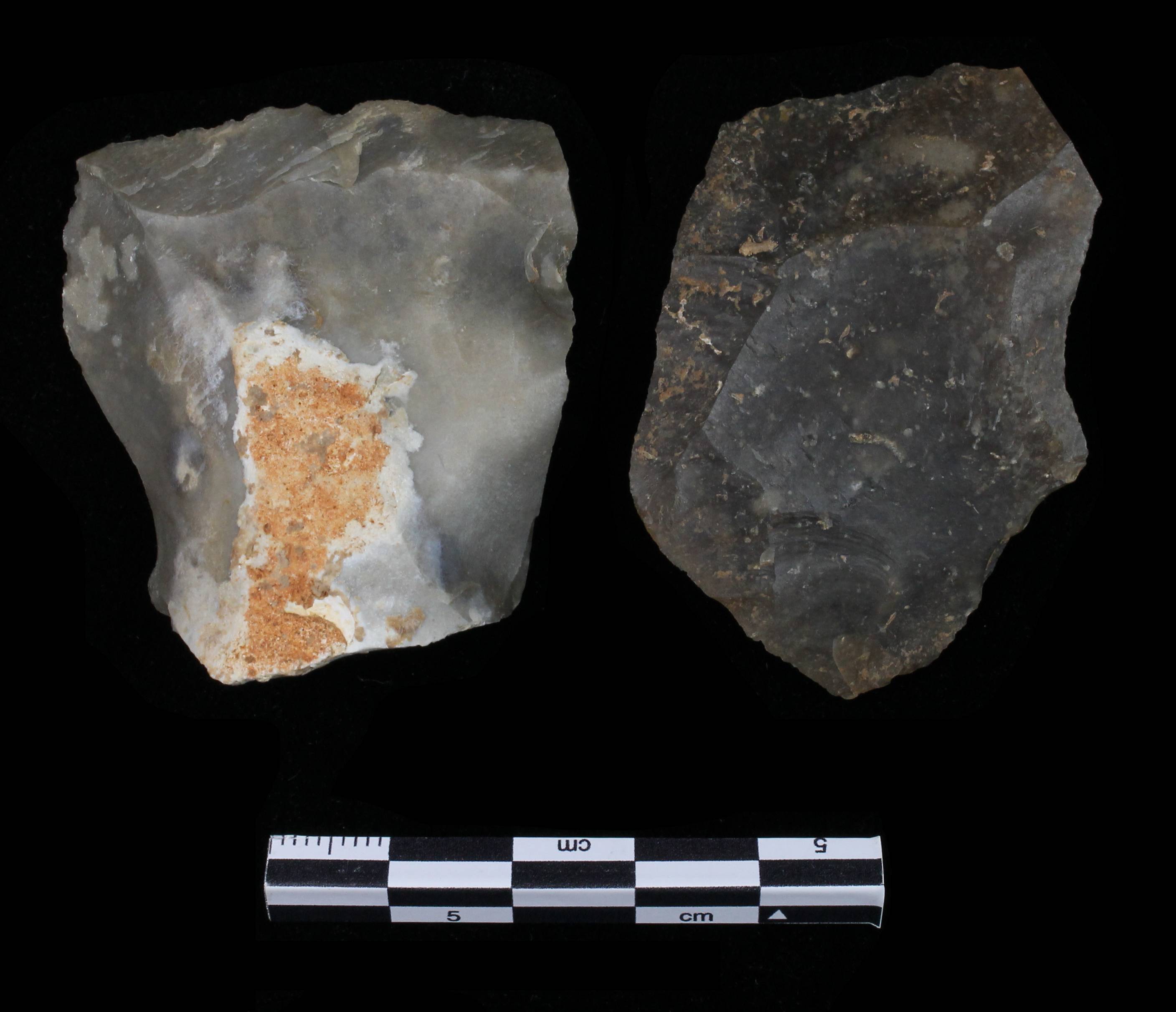Unifaces and Other Tools

Formal unifaces are stone tools that are flaked only on one side and assume a standardized form. In the process of creating this standardized form, prehistoric tool makers modified the original shape of the flake to the extent that its initial size and shape cannot be determined. A uniface is designated as formal if it exhibits significant shaping and deliberate patterning of unifacial flake removals on one or more edge. Sometimes specimens exhibit unifacial flaking but lack the characteristics that would qualify it as formal. If these specimens have regular and intentional flaking (retouch) on one or more of its edges, but its original flake form is still distinguishable, it is classified as a minimally retouched uniface (MRU).
On the other hand, flake tools include any flake that exhibits changes on its edges either from use (known as use-wear) or from re-sharpening (edge modification). These tools have little to no modification on their ventral surfaces. Specimens are classified as a flake tool if they show evidence of having been modified or utilized and if the original flake morphology can be determined. Flake tools are also flaked only on one side, usually the outer surface, but do not assume standardized forms. Flake tools are considered to be expedient tools that can be easily prepared. Expedient flake tools are infrequently maintained and often discarded to be replaced with a new tool when they attain an undesirable amount of wear.

Our 2014 excavations at the Spring Lake Site yielded 49 unifaces and over 300 flakes with evidence of use wear or modification. In addition, the SLDR collection includes stone artifacts typed as gravers, drills and awls. Future analyses will involve taking a closer look at the unifaces and flake tools from the established analytical units and sorting them into the Formal, MRU and Flake Tool categories. This will help us understand more about lithic tool production and changes in lithic technology over time; the results and interpretations of this analysis will be available here in the near future. For now, check out the gallery below to see examples of Unifaces, MRUs, Flake Tools, and more!
What is a Flake?
A flake is a piece of stone that has been removed from a larger core by percussive striking, either with a hammerstone (hard hammer percussion) or some other tool such as an antler billet (soft hammer percussion), or by pressure flaking with a sharp pointed tool. Once a flake has been removed from a core, the flake can then be turned into a quick expedient tool with minimal shaping like the tools discussed in this section, or be further flaked and shaped into a more complex and reliable tool like a biface or projectile point. For more information about cores and debitage (waste flakes), click on the image above.

